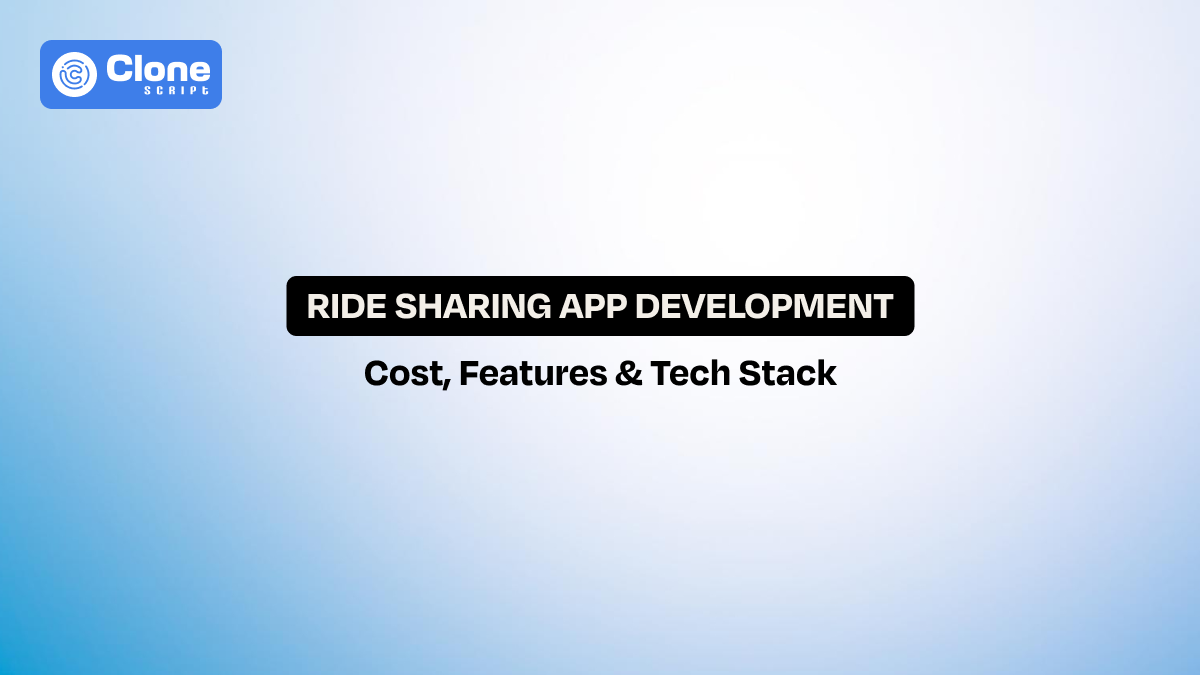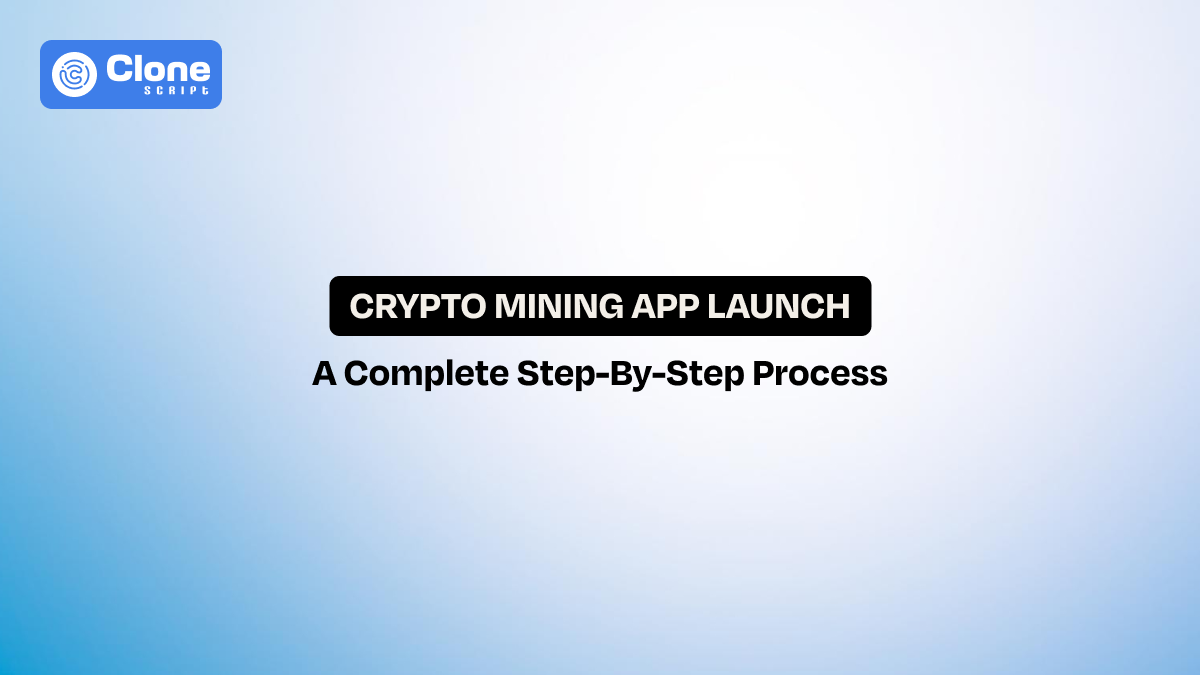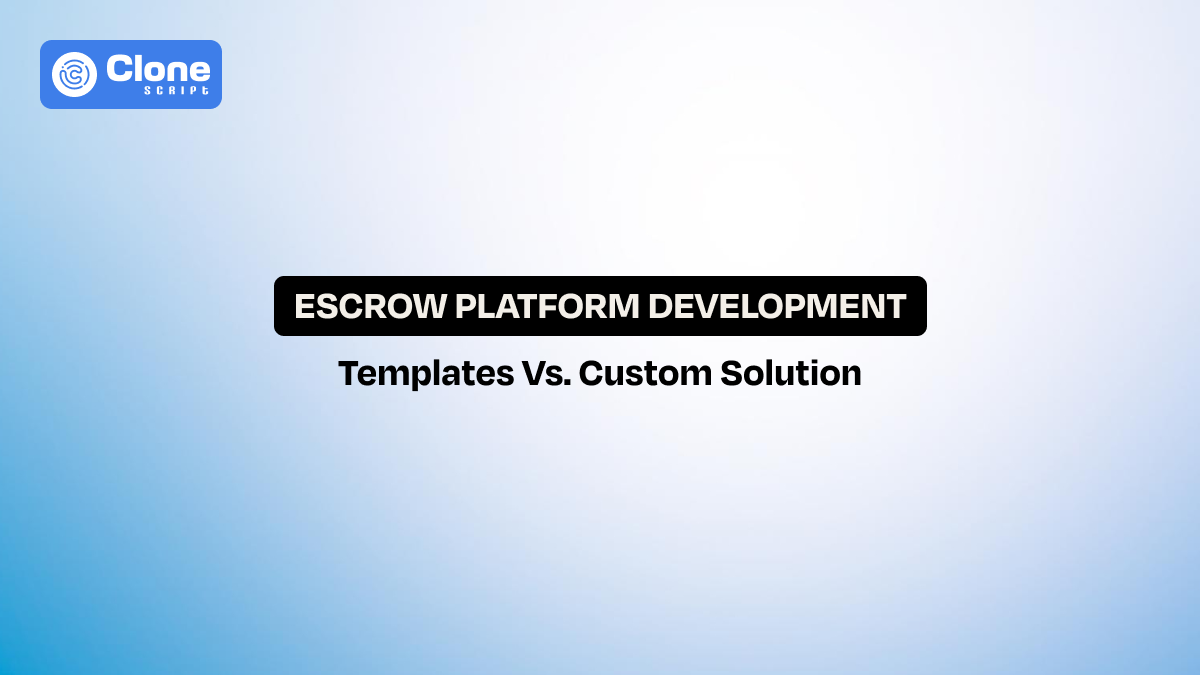Ride Sharing App Development: Cost, Features & Tech Stack Explained
A ride-sharing app is not just a booking platform for riders to get a flexible mobility solution within a budget. It’s about having an ultimate way to meet the needs of reliable transportation using advanced technology. Through the expansion of this sector, developers are looking to launch the app to improve local services.
Three questions always appeared in the minds:
-
How much does ride-sharing app development in 2025 actually cost?
-
What features have become must-haves to meet rising user expectations?
-
Which tech stack offers the best balance of speed, performance, and affordability?
This guide answers these questions. It explains practical insights into development costs, key features, and the most efficient tech choices. In particular, discover why Flutter and ready-made ride-sharing app templates are ideal for saving time, reducing costs, and launching faster.
Ride Sharing App Development Cost in 2025
When planning a ride booking app development project today, understanding the cost breakdown is essential for making informed decisions. The cost to develop a ride-sharing app like Uber in 2025 typically ranges between $50,000 and $150,000, depending on various factors such as complexity, platform choice, and the features included.
What Factors Drive the Cost?
Here is the list of those factors that decide the ride-sharing app development cost:
-
Platform Selection
Developing native apps for both iOS and Android requires separate codebases, which increases development time and cost. In contrast, using cross-platform frameworks like Flutter enables building a single codebase that works on both platforms and reduces expenses.
-
Feature Set Complexity
Basic apps with core functionality (user registration, ride booking, tracking, payments) fall at the lower end of the cost spectrum. But advanced features like dynamic pricing, route optimization, real-time analytics, or multi-currency payments naturally push the budget higher.
-
Backend Infrastructure
A strong ride-sharing app backend and tech stack are key elements to maintain scalability, security, and real-time performance. Cloud services, database setup, API integrations, and server infrastructure can represent a significant portion of the budget.
-
Third-Party Integrations
Integrating services like Google Maps, payment gateways (Stripe, PayPal, Razorpay), and notification services adds cost, but it allows for smooth operation for booking the ride.
-
UI/UX Design and Customization
Investing in a user-friendly, polished interface makes a big difference in user retention but impacts the overall development cost. For example, a ride-sharing app Figma UI design is a cost-friendly option, but for an advanced solution, it’s preferable to go with a custom app UI and UX design.
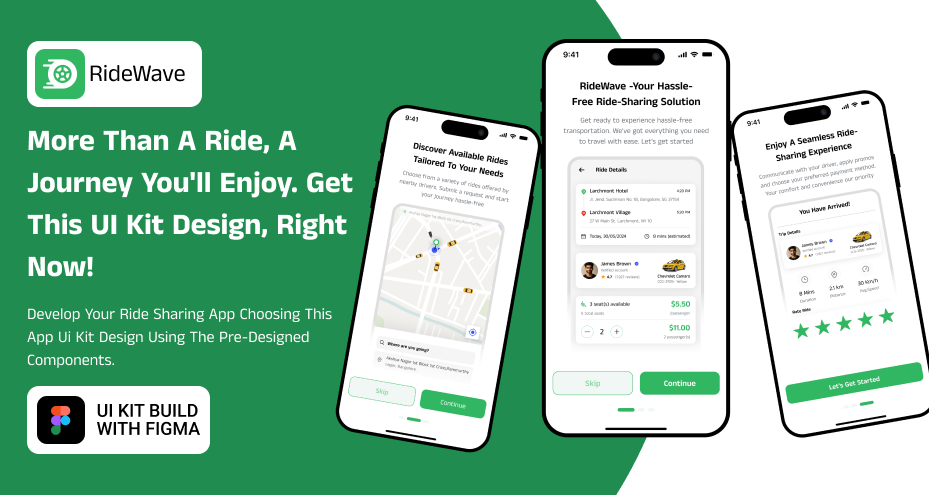
Why Flutter Reduces Costs?
Using Flutter not only speeds up development but also cuts ongoing maintenance costs, making it one of the best choices for an affordable ride-sharing app development solution.
Additionally, starting with a ready-made app template in Flutter reduces upfront development hours, allowing businesses to focus resources on custom features and market fit.
In the next section, we’ll break down the essential features that a modern ride booking app cannot do without in 2025.
8 Must-Have Features in a Ride Sharing App
In 2025, users expect a ride-sharing app to be fast, reliable, and intuitive. Beyond simply booking a ride, modern passengers and drivers look for convenience, safety, and transparency. Building a feature-rich yet efficient app is key to standing out in a crowded market. Here are the core features for an app:
1. User Registration and Profile Management
Keeping the simple, secure sign-up options is essential. Users should be able to register using email, phone number, or social login. Profile section must allow easy management of personal details, payment methods, and ride history.
2. Real-Time GPS Tracking and Navigation
Precise location tracking ensures passengers see the driver’s approach in real time and helps drivers optimize routes. Integrating the Google Maps API or Mapbox helps in accurate navigation and route optimization.
3. Ride Booking with Fare Estimation
A seamless interface for selecting pickup and drop-off points is fundamental. Transparent fare estimates based on distance, traffic, and demand guide users to understand pricing before confirming a ride.
4. In-App Payments and Wallet System
Flexible payment options are expected. Integration with popular payment gateways allows users to pay via credit/debit cards, digital wallets, or cash. A built-in wallet feature enhances convenience and enables promotional offers.
5. Push Notifications and Alerts
Timely updates on driver arrival, ride confirmation, payment receipts, and special offers keep users engaged and informed throughout their journey. Use this feature as a 24*7 marketing channel with a relevant message and increase the conversion.
6. Driver and Passenger Ratings
A transparent rating and review system holds both parties accountable, helping maintain service quality and trust. Passenger can share their feedback regarding the ride and driving skills. While drivers can provide the service experience for passenger politeness and payment-related convenience.
7. Admin Panel with Analytics Dashboard
A powerful admin dashboard is ideal for managing users, monitoring rides, tracking revenue, handling disputes, and generating reports. Data-driven insights help fine-tune business strategies.
8. Safety Features
Emergency SOS button, driver identity verification, and real-time trip sharing with trusted contacts are increasingly important to maintain passenger safety. It can work as a key feature for a ride booking app.
These must-have features in a ride-sharing app are no longer optional. The next logical step is understanding which technology stack supports these features efficiently without overcomplicating development.
Ride Sharing App Tech Stack Explained
Choosing the right technology stack is important to building a ride-sharing app that performs well, scales easily, and stays cost-effective over time. Here’s a breakdown of the most effective ride-sharing app tech stack explained for modern development:
1. Frontend Development
Here is the list of frontend mobile app development stacks to consider:
-
Flutter: Flutter stands out as the top choice for building cross-platform apps. It enables writing a single codebase that works on both iOS and Android to save development time and cost. It offers near-native performance, and the customizable UI components help deliver a smooth user experience.
-
Alternatives like React Native can also be used, but Flutter provides faster rendering and easier maintenance, especially for a complex app like a ride-sharing solution.
2. Backend Development
Take a look at the reliable backend development technology:
-
Node.js: It is known for handling a large number of concurrent connections efficiently. Node.js is a popular choice for building real-time apps like ride-sharing platforms.
-
Django (Python): It offers robust security and rapid development, ideal for managing complex business logic and integrations.
-
Firebase: Useful for MVPs or smaller-scale apps, Firebase provides real-time database support, push notifications, and simple backend management without the need to build everything from the first step.
3. Database Layer
Prefer the following database options for the app development:
-
PostgreSQL / MySQL: Through relational databases, managing structured data like user profiles, trip records, and payment history becomes simplified and appropriate.
-
MongoDB: It handles unstructured data such as logs or analytics data, helping the system scale horizontally. To handle the information that is being secured on the servers.
4. Geolocation Services
Check the following technology for geolocation activation in the ride booking app:
-
Google Maps API: It is an industry-standard approved API for accurate mapping, real-time location updates, and route optimization.
-
Mapbox: It offers more customizable mapping solutions and can reduce costs, especially in markets where Google Maps pricing is high.
5. Push Notifications
To manage the app’s notifications, prefer the following:
-
Firebase Cloud Messaging (FCM) is widely used to send instant alerts for ride updates, offers, and safety warnings. With documentation and community support, identifying bugs and errors becomes easier and makes the product accessible to everyone.
6. Payment Gateway Integration
For accepting, processing, and confirming the online payments, the gateway integration is required:
-
Popular integrations include Stripe, PayPal, and Razorpay, allowing multi-currency support and flexible payment options.
7. Cloud Infrastructure
For managing the entire app on the web, following cloud computing is useful:
-
Cloud services like AWS, Google Cloud Platform, or Microsoft Azure are commonly used for hosting, scaling, and securing the backend.
Why This Tech Stack Matters
A well-structured online ride-booking mobile app backend and tech stack maintain real-time performance, support scalability as the user base grows, and ensure secure handling of sensitive data like payments. The combination of Flutter for the frontend and Node.js or Django for the backend creates a balanced solution that reduces development time while maintaining high performance and reliability.
But why Flutter is a good option for app development when speed, performance, and cost-efficiency matter the most? Find the answer below.
How Ready-Made Ride Sharing App Templates Save Time & Money?
Rather than building every feature from the ground up, templates provide a fully structured, tested, and scalable base that simplifies the process.
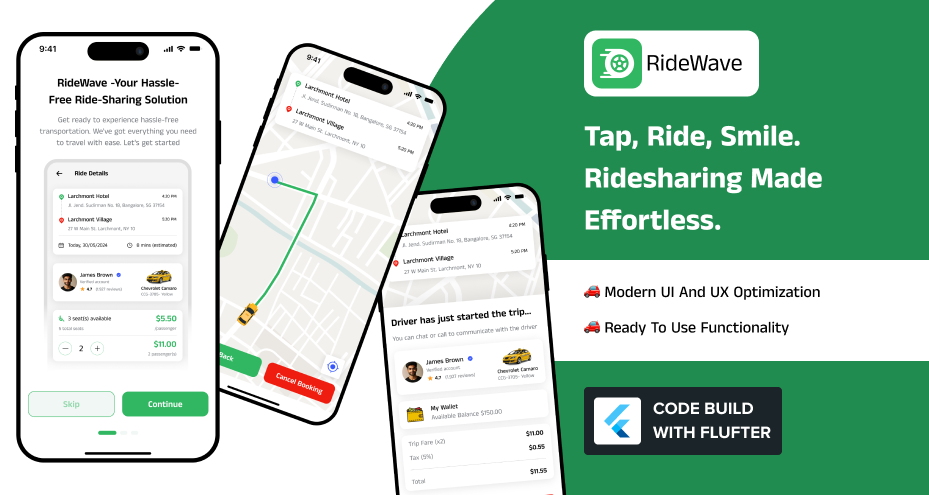
1. Faster Time-to-Market
Pre-built templates come with essential features already implemented:
-
User registration
-
Real-time tracking
-
Ride booking flows
-
Payment gateways
-
Notifications
This eliminates weeks, if not months, of development effort, helping businesses launch faster and stay ahead of competitors.
2. Significant Cost Savings
Custom development involves writing thousands of lines of code and performing extensive testing for reliability and performance. By starting with a ready-made ride-sharing app template in Flutter, businesses reduce upfront development costs and avoid unexpected expenses that often arise when coding from scratch.
3. Proven and Stable Architecture
Templates are built following industry best practices. They offer well-organized code, clean architecture, and reliable backend integrations, reducing the risk of bugs or performance issues in production. This is essential when scaling the app as the user base grows.
4. Easy Customization
A template provides the core structure and features but is fully customizable. Businesses can easily insist on the development partner to modify branding elements, integrate additional services, or extend functionality to suit specific market needs—whether adding a loyalty program, multi-currency payments, or advanced analytics.
5. Ongoing Support and Updates
Most reputable templates come with regular updates and community support, keeping the solution up-to-date with the latest Flutter versions, security patches, and new best practices. This helps in long-term stability without ongoing heavy investments in maintenance.
6. Scalable from MVP to Full Product
For startups, a template is perfect to quickly launch an MVP and test market demand, like the Uber app. As the business grows, the app can be expanded with advanced features like AI-powered ride matching, advanced analytics, or dynamic pricing models.
In the final section, we’ll wrap up by summarizing why investing in the right strategy today leads to a future-ready, competitive ride-sharing app.
Conclusion
Developing a ride-sharing mobile app in 2025 depends only on the advanced technology you use and the features you integrate. Ultimately, if you’re looking for a cost-effective development, then Flutter is a good option where the single codebase is useful for iOS, Android, and web versions of the application. With the templates, things become easier to bring the next Ola, Uber, and Lyft app to the market.
FAQs
-
What is the future trend in ride-sharing app development?
The future of ride-sharing app development focuses on AI-powered ride matching, electric vehicle integrations, autonomous driving support, multi-modal transport options, and a stronger focus on sustainability and user safety to drive smarter and greener mobility solutions.
-
Is it necessary to have an admin panel for a ride booking app?
Yes, an admin panel is useful for managing users, drivers, rides, payments, and analytics. It enables monitoring, dispute resolution, data-driven decisions, and overall system management, ensuring smooth operation and continuous improvement of the platform.
-
How can I monetize a ride-sharing app?
Ride-sharing app monetization strategies include charging a commission per ride, implementing surge pricing, offering premium subscriptions, running in-app advertisements, and providing additional services like package delivery or car rentals, depending on the business model.
-
Why is real-time communication important in a ride booking app?
Real-time communication between drivers and passengers enhances transparency, reduces confusion, and ensures better coordination. In-app chat or call features help clarify pickup locations, report delays, or address questions, improving the overall user experience.
-
How long does it take to build a ride-sharing app?
Developing a custom ride-booking app typically takes 3 to 6 months, depending on complexity. Using a Flutter template can reduce development time to 2–3 months. It helps businesses launch faster and respond to market demands quickly.
-
Can I build a ride service booking app without a big budget?
Yes. Using Flutter and a ready-made ride-sharing app template helps minimize costs by providing a stable, pre-built codebase. This approach accelerates development, lowers the need for specialized developers, and avoids unnecessary custom coding expenses.
 BTC - Bitcoin
BTC - Bitcoin
 USDTERC20 - USDT ERC20
USDTERC20 - USDT ERC20
 ETH - Ethereum
ETH - Ethereum
 BNB - Binance
BNB - Binance
 BCH - Bitcoin Cash
BCH - Bitcoin Cash
 DOGE - Dogecoin
DOGE - Dogecoin
 TRX - TRON
TRX - TRON
 USDTTRC20 - USD TRC20
USDTTRC20 - USD TRC20
 LTC - LiteCoin
LTC - LiteCoin

